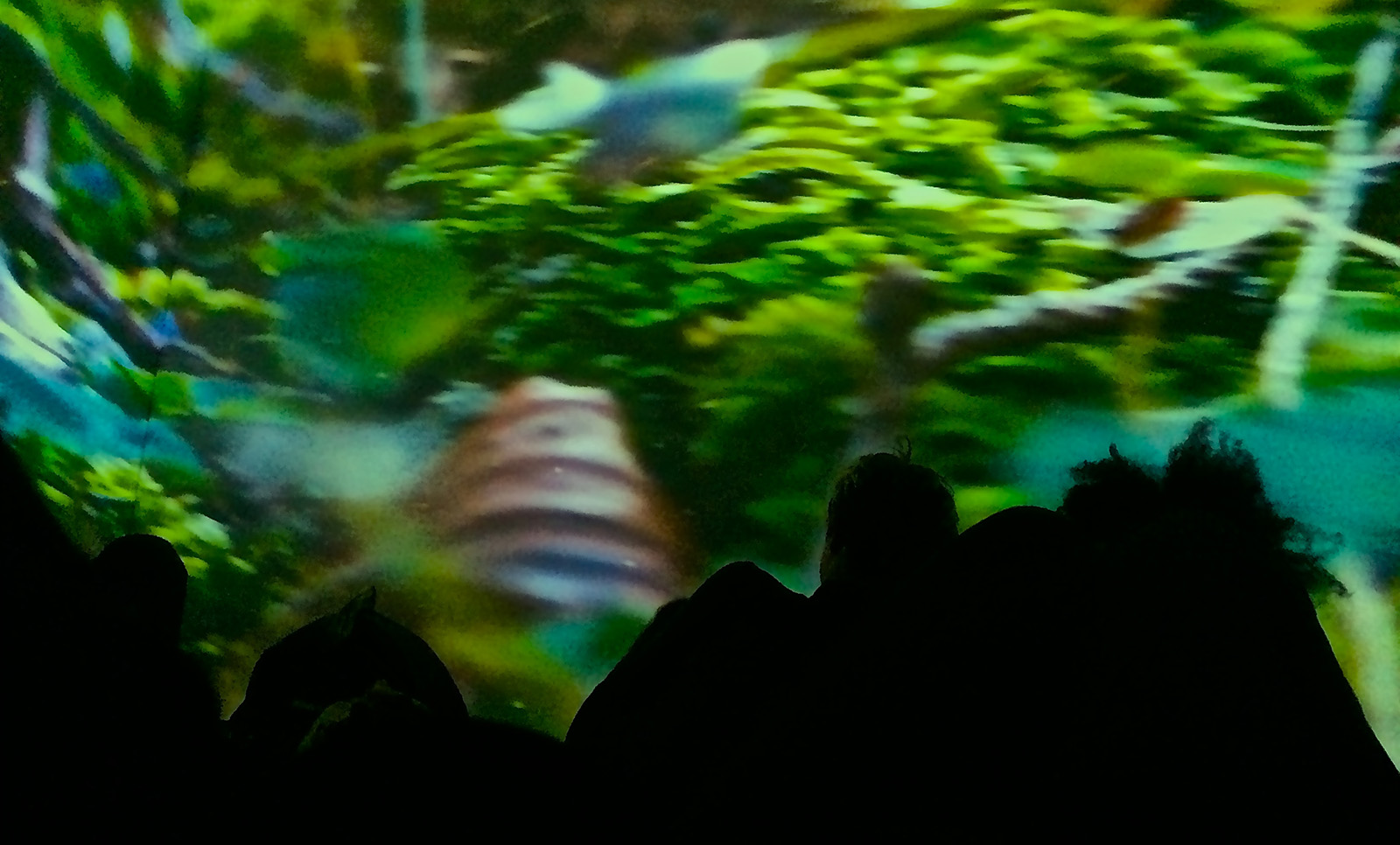Worry Will Vanish – Pippilotti Rist at Hauser & Wirth in London
Rarely has a gallery been so inviting; at Hauser & Wirth, in the heart of London’s most fashionable district, the guests for the day – 10 January 2015 – are chatting intensely amongst each other. We share the space, democratically and considerately, som of us on an organically formed bench where anyone wishing to enter an inner room is invited to remove their shoes. Removing one’s shoes is sometimes a ritual of respect, and this requirement has often been a way of encouraging humility before spiritual powers. It is also an interesting process from a more down-to-earth perspective; along with the shoes go the confidence-building, pompous clicks made by heels, for example, and the balance in the room also changes slightly for the barefoot visitor. A simple yet challenging trick. However, the atmosphere in the outer room is far from tense, even though the exhibition is crammed with people. Today it is the finissage, a conclusion that is reminiscent of a vernissage but marks success in a different way. The fact that so many people have come to see Worry Will Vanish before it closes is confirmation of its success.
The heavy, sound-absorbing draperies reveal an inner room with a great many visitors lying and reclining all around. Swaying vegetation, similar to reeds, meets enlarged blood vessels, while undefinable skin that seems humanoid – sometimes smooth, sometimes veined – flows forth in aesthetic film sequences on two opposing walls.
A couple of women lie on the floor beside me, their arms round each other in a familiar way, and giggle quietly. It is somewhat ridiculous and refreshing at the same time. It is also easy to be disappointed, if only for a moment; shouldn’t there be more than this? A reference to a past postmodern view of art? There should, of course.
In the postmodern world which the western cultural elite is gradually leaving behind, philosophy mainly became theory of science, art was often called research and politics became increasingly influenced by scientific values. Ideas about the universe, which were considered muddled in earlier, rational eras, were formulated as scientifically feasible in the postmodern discourse. Physicists discovered fractals, humanists received confirmation from chemists that no research was possible without the intervention of scientists. A view of how macro and micro were the same, which was often interpreted as “oriental”, was repeated countless times in many disciplines at university and on the cultural pages for a while.

By using the now common trick of the international artist elite of letting those present literally go from observer to participant, Pippilotti Rist is making ironic remarks about more than postmodernism’s science artists. We find ourselves in central London and also in the heart of the implicit political concept of inclusion. The title of the exhibition “Worry Will Vanish” alludes to this very point: that the form in which the art encounters the observer must be able to erase boundaries. Boundaries in the room where it is shown, between those who encounter it and the art, the artist and between these people and the world around. A process that in turn will change art’s position as a phenomenon for different types of elite as much as it will influence its age to think differently about core values, for example. These are large shoes to fill for anyone wanting to call themselves an artist today. It isn’t difficult to see why more and more artists seem to be making ironic comments about how this could actually be possible. With “Worry Will Vanish” Pippilotti Rist appears to be one such artist.
We find ourselves in central London and in the heart of the implicit political concept of inclusion.
Rist has had duvets placed on the large, carpeted floor in the comfortably dark inner room. Obviously with the aim of creating a “safe room”. For those of us there, in London’s most charming district in a prestigious gallery, who know who Rist is on the contemporary art map – one of the most celebrated artists of today – it is. The atmosphere is relaxing, inviting and unpretentious. Even the obligatory delightful small child is here today, on the last day of the exhibition. Happy laughter and a sweet shadow of a figure wearing a nappy accompany the sufficiently magical films, as though Rist had also directed co-actors. Irony is an interesting tool for as long as this remains the cultural and proper elite. But irony must be used with great precision and care to be effective. As much as I appreciate Rist’s bold claims, I am equally hesitant about this particular attempt – if it is about a desire to reach out. With this exhibition she consolidates her position rather than renews herself. A legitimate method for an established artist, something for the initiated elite to appreciate, but not the most effective way of communicating with those who believe in inclusion and change via artistic expression. The level risks bypassing the intellectual sphere of the majority. In this way, the exhibition consolidates the perception of the art world as being self-supporting, like a biosphere on a strange planet, and the question is if this really was the intention?
